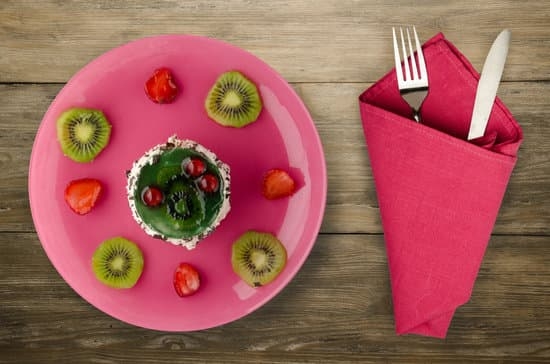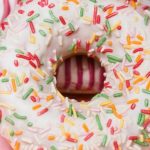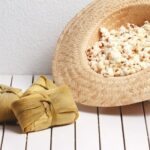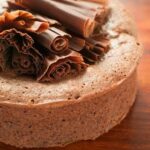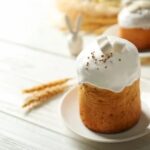What can I use to practice cake decorating? Practicing cake decorating is a crucial step in honing your skills and mastering the art of creating beautifully decorated confections. Whether you’re a beginner or looking to improve your techniques, dedicating time to practice can significantly enhance your abilities and creativity in cake decorating.
Mastering cake decorating involves using basic tools such as piping bags, tips, spatulas, and turntables. These essential tools help you create intricate designs and achieve professional-looking results. However, for beginners just starting out, there are alternative makeshift tools like ziplock bags, toothpicks, and plastic knives that can be used to practice basic techniques before investing in professional equipment.
In addition to practicing with traditional tools, working with fondant and buttercream are key components of cake decorating. Learning how to roll, smooth, and shape fondant effectively can elevate the design of your cakes. Similarly, mastering buttercream piping techniques like rosettes, ruffles, and borders can add a unique touch to your creations. By incorporating these practices into your routine, you can enhance your skills and creativity in cake decorating.
Basic Tools for Cake Decorating
When it comes to cake decorating, having the right tools can make a world of difference in achieving professional-looking results. One of the most essential tools for any baker or decorator is the piping bag. Piping bags come in various sizes and materials, with disposable options being convenient for beginners. Coupled with piping tips in different shapes and sizes, you can create intricate designs and patterns on your cakes.
Another indispensable tool for cake decorating is the offset spatula. This tool allows for smooth and even application of frosting on cakes, making it easier to achieve a clean finish. Additionally, a turntable is crucial for rotating the cake while decorating, ensuring that you have access to all angles without having to awkwardly maneuver around the cake.
For those just starting out in cake decorating and may not have all the specialized tools yet, there are alternative items that can be used as makeshift tools. Ziplock bags can be filled with frosting and snipped at the corner to act as a makeshift piping bag, while toothpicks and plastic knives can be used for creating simple decorations and textures on your cakes. These makeshift tools are great for practice sessions before investing in more professional equipment.
In summary, having the right tools for cake decorating is essential for achieving professional results. Whether you are using basic piping bags and tips or getting creative with makeshift tools, practicing regularly will help you improve your skills over time. So if you’re wondering “what can I use to practice cake decorating,” start by equipping yourself with the necessary tools and unleash your creativity on cakes.
Alternative Tools for Beginners
When starting out with cake decorating, it’s essential to have the right tools at your disposal. However, not everyone may have access to professional-grade equipment right from the beginning. In such cases, there are alternative items that can be used as makeshift tools for practicing and honing your skills. Here are some suggestions for what you can use to practice cake decorating as a beginner:
- Ziplock bags: If you don’t have piping bags on hand, you can easily use small resealable plastic bags as a substitute. Simply fill the bag with icing or frosting, snip off a tiny corner of the bag, and use it for piping designs onto your cakes.
- Toothpicks: Toothpicks are versatile tools that can be used for various purposes in cake decorating. You can create intricate designs, swirls, or even write messages by dragging a toothpick through icing or frosting on your cake.
- Plastic knives: Plastic knives can be used for spreading frosting or smoothing out buttercream on your cakes. They can also help create texture or patterns on the surface of the icing.
These alternative tools may not offer the same precision and control as professional cake decorating equipment, but they can certainly help you practice and experiment with different techniques. Remember, it’s all about getting creative and building your skills through hands-on experience.
Practice makes perfect when it comes to mastering cake decorating, so don’t be afraid to try out these makeshift tools and see what works best for you. As you continue to practice and refine your techniques, you can gradually invest in higher-quality tools to take your cake decorating skills to the next level. With dedication and perseverance, you’ll soon be creating beautifully decorated cakes that will impress family and friends alike.
So, whether you’re just starting out on your cake decorating journey or looking to enhance your existing skills, make use of these alternative tools to practice and improve your craft. Experiment with different textures, shapes, and designs on dummy cakes or cupcakes until you feel confident enough to tackle more intricate projects.
Remember, practice is key to becoming proficient in cake decorating – so roll up your sleeves, grab those ziplock bags and toothpicks, and start creating delicious works of art.
Fondant Practice
Working with fondant can be a challenging yet rewarding aspect of cake decorating. Fondant allows for intricate designs and smooth finishes that can elevate the look of your cakes. To practice working with fondant, you will need a few essential tools such as a rolling pin, cornstarch or powdered sugar for dusting, and fondant smoothers for achieving a flawless finish.
When practicing with fondant, it’s important to start with a clean and smooth surface. Dust your work area with cornstarch or powdered sugar to prevent sticking. Begin by kneading the fondant until it is pliable and roll it out evenly to the desired thickness. Use a fondant smoother to eliminate any air bubbles and ensure a smooth surface when covering your cake.
Shaping techniques in fondant decoration can include using cookie cutters for precise shapes, creating ruffles or pleats by hand, and sculpting figurines or flowers. Experimenting with different techniques will help you build confidence and skill in working with fondant. Remember that practice makes perfect, so don’t be afraid to make mistakes as you learn what works best for you.
| Fondant Practice Tips | Tools Needed |
|---|---|
| Start with a clean surface | Rolling pin |
| Knead the fondant until pliable | Cornstarch/powdered sugar |
| Use smoothers to eliminate air bubbles | Fondant smoothers |
Buttercream Practice
Working with buttercream can be both exciting and challenging for beginner cake decorators. Mastering buttercream piping techniques is essential for creating beautiful designs on cakes. The key to successful buttercream decoration lies in practicing different piping styles, such as rosettes, ruffles, and borders. So what can I use to practice cake decorating with buttercream? Let’s delve into some useful techniques and tools that will help you hone your skills.
Tools for Buttercream Piping
Before diving into practicing buttercream piping, it’s crucial to have the right tools at hand. Essential items include piping bags, different tips (such as star tips, round tips, and petal tips), a spatula for smoothing the buttercream on the cake, and a turntable for easy maneuvering while decorating. These tools are indispensable when it comes to perfecting your piping skills and creating intricate designs.
Techniques for Buttercream Piping
To practice buttercream piping effectively, start by mastering basic designs like rosettes, which involve making circular swirls with the piping bag. Ruffles can be achieved by creating parallel lines of piped buttercream with a back-and-forth motion. Borders are another essential skill to work on since they frame the edges of the cake beautifully.
Experiment with different pressure levels on the piping bag to create varying thicknesses in your designs. Practice these techniques repeatedly to build confidence and precision in your buttercream piping.
Advanced Buttercream Designs
Once you feel comfortable with basic buttercream piping techniques, challenge yourself by attempting more advanced designs like floral patterns, intricate scrollwork, or even writing messages on cakes. Practice patience and attention to detail as you strive to perfect these complex designs. Consider watching online tutorials or joining baking classes to learn new tricks and improve your skills further. Remember that consistent practice is key to becoming proficient in buttercream decoration – so grab your tools and start practicing today.
Practice Cakes
When it comes to learning and improving your cake decorating skills, practice makes perfect. One of the best ways to hone your craft is by using dummy cakes, cupcakes, and cookies as practice surfaces for different techniques. Whether you’re a beginner looking to master basic piping or an experienced decorator wanting to perfect intricate designs, these practice tools can help you elevate your skills.
Here are some ideas on how you can effectively use dummy cakes, cupcakes, and cookies for practicing various cake decorating techniques:
- Dummy Cakes: Invest in foam dummy cakes that mimic the shape and size of real cakes. This allows you to practice piping, smoothing buttercream, and applying fondant without the pressure of working on a real cake.
- Cupcakes: Decorate individual cupcakes with different designs to experiment with piping flowers, creating textures, and practicing color combinations. Cupcakes are also great for practicing intricate details like royal icing work or hand painting.
- Cookies: Use sugar cookies as a canvas for practicing techniques like cookie flooding, royal icing piping, and airbrushing. Cookies are perfect for honing precision skills and experimenting with different decorating styles.
By utilizing dummy cakes, cupcakes, and cookies as practice surfaces, you can build confidence in your abilities and refine your cake decorating skills. So next time you ask yourself “what can I use to practice cake decorating,” remember these simple yet effective tools that can help take your creations to the next level. Happy decorating.
Online Resources
Learning to decorate cakes can be a fun and rewarding hobby, but finding the right resources to improve your skills is essential. Luckily, there are a plethora of online resources available for beginners and experienced decorators alike. Websites and tutorials offer step-by-step guidance on various techniques, from basic piping to intricate fondant designs. Utilizing these platforms can help you hone your decorating skills and expand your creativity in the kitchen.
One popular website for cake decorating enthusiasts is Craftsy, which offers a wide range of online classes taught by industry professionals. From beginner courses on buttercream basics to advanced classes on sculpting sugar flowers, Craftsy provides comprehensive instruction for decorators of all levels.
Another excellent resource is YouTube, where you can find countless tutorial videos on everything from simple icing techniques to elaborate cake sculpting. Watching experienced decorators demonstrate their skills can be incredibly helpful in learning new tricks and refining your own style.
In addition to dedicated cake decorating websites and video tutorials, social media platforms like Instagram and Pinterest are also fantastic sources of inspiration. By following talented decorators and scrolling through endless photos of beautifully decorated cakes, you can gather ideas for your own creations and stay up-to-date on the latest trends in the baking world.
Engaging with the online cake decorating community can also provide valuable feedback and support as you practice and improve your skills. With so many resources available at your fingertips, there’s no excuse not to start practicing cake decorating today.
Practice Schedule
Setting a Routine
Establishing a regular practice schedule is crucial for honing your cake decorating skills effectively. One tip for setting aside dedicated time is to create a routine that fits into your daily schedule. Whether it’s early in the morning, during your lunch break, or in the evening after work, consistency is key. By allocating specific time slots for practice sessions, you can ensure that you prioritize your skill development.
Goal Setting
Another helpful tip for improving your cake decorating abilities is to set clear goals for each practice session. Determine what techniques or designs you want to focus on and create a plan to achieve them. Whether it’s perfecting smooth buttercream frosting or mastering intricate fondant details, having specific objectives will keep you motivated and on track during your practice sessions.
Tracking Progress
To monitor your improvement over time, consider keeping a journal or notebook where you can document your practice sessions. Note down the techniques you worked on, any challenges you faced, and the areas where you feel you have made progress.
Tracking your development not only allows you to see how far you’ve come but also helps identify areas that may need extra attention in future practice sessions. Remember, consistent effort and dedication are key to becoming a proficient cake decorator.
Conclusion
In conclusion, practicing cake decorating is essential for honing your skills and mastering various techniques in the world of baking and confectionery. The tools mentioned in this article, from basic essentials like piping bags and tips to makeshift items like toothpicks and ziplock bags, provide a wide range of options for beginners to experiment with. Whether you are working with fondant or buttercream, there are specific techniques that can be practiced to perfection through dedication and patience.
When it comes to choosing what to use for practicing cake decorating, the possibilities are endless. You can start with simple designs on dummy cakes, cupcakes, or cookies before moving on to more intricate patterns and styles.
Online resources offer a wealth of tutorials and guides that can help you improve your skills at your own pace. Setting aside regular practice sessions will not only help you refine your abilities but also allow you to unleash your creativity and create stunning edible works of art.
So, if you have been wondering “what can I use to practice cake decorating,” remember that all it takes is some basic tools, a willing attitude to learn, and consistent practice. With dedication and perseverance, you can elevate your cake decorating skills to new heights. Start today and watch as your creations become more polished and professional with each passing day. Happy decorating.
Frequently Asked Questions
How Can I Practice Cake Decorating Without Waste?
One way to practice cake decorating without creating waste is by using dummy cakes or cake dummies. These are reusable, foam-based structures that mimic the shape and size of real cakes. You can decorate them multiple times without wasting actual cake ingredients.
What Do You Use to Practice Cake Decorating?
When practicing cake decorating, you can use various tools and materials, such as piping bags with different tips, spatulas, offset spatulas, turntables, cake scrapers, fondant smoothers, edible decorations like sprinkles or edible pearls, and food coloring gels. These items will help you develop your skills and creativity in decorating cakes.
What Can I Use Instead of Buttercream for Practice?
If you prefer not to use buttercream for practice or want a more economic alternative, you can use shortening-based frosting or royal icing. Shortening-based frosting is similar in texture to buttercream but uses shortening instead of butter.
Royal icing is made from confectioners’ sugar and egg whites beaten together until stiff. Both options are suitable for practicing different decorating techniques without the taste or expense of buttercream.

Welcome to our cake decorating blog! My name is Destiny Flores, and I am the proud owner of a cake decorating business named Cake Karma. Our mission is to provide delicious, beautiful cakes for all occasions. We specialize in creating custom cakes that are tailored specifically to each customer’s individual needs and tastes.

